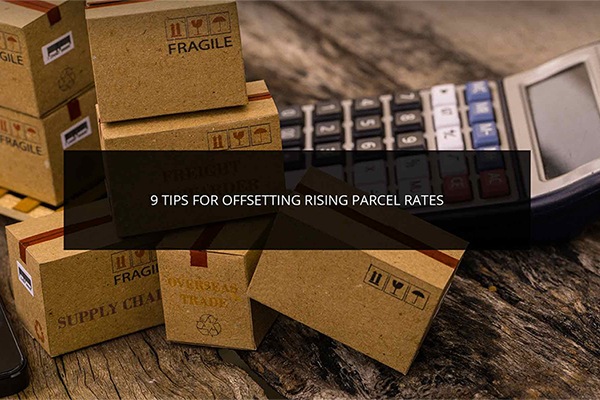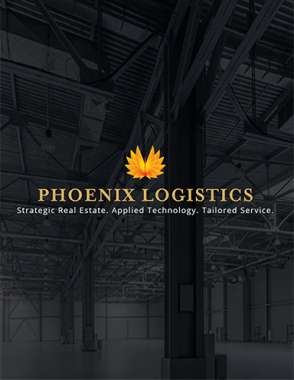9 Tips for Offsetting Rising Parcel Rates

In the face of labor shortages, inclement weather, and numerous other disruptive events, major parcel carriers have elected to pass rising costs on to the customer in the form of higher rates.
PARCEL CARRIERS
Supply chain issues have rattled the U.S. logistics sector for several years, and parcel carriers are no exception.
In the face of labor shortages, inclement weather, and numerous other disruptive events, major parcel carriers have elected to pass rising costs on to the customer in the form of higher rates.
U.S. parcel carriers implemented a 5.9% general rate hike in 2022, a full percentage point higher than in 2021.
On top of that, major parcel carriers have all implemented additional peak season surcharges for the remainder of 2022, and most have increased surcharges for things like fuel. Furthermore, all of them will no doubt increase rates again in 2023.
For e-commerce businesses, these ever-increasing rates drive up the cost of order fulfillment. Many online sellers may feel their only alternative is to pass rising shipping costs on to customers.
However, these tips may help internet retailers delay price increases for as long as possible.
TIP #1: SKIP PARCEL SHIPPING ZONES
Parcel carriers use shipping zones to determine the cost of a parcel shipment. For example, USPS shipping zones range from 1-9, with Zone 1 being the closest and Zone 9 the furthest away. Shipping to Zone 9 can be extremely cost-prohibitive for an individual parcel.
However, if you have dozens or hundreds of parcels going to Zone 9, you can put them into a truckload or less-than-truckload shipment and move them to the target zone, then drop them into the last-mile delivery pipeline. Savings can stack significantly depending on how many parcels you include in the zone-skipping shipment.
TIP #2: RE-EXAMINE EXPRESS SHIPMENTS
Just because your customers demand two-day delivery doesn’t mean you’re stuck shipping everything express. Regular ground shipping will reach customers in the first two or three shipping zones within two days. Leveraging express services only when necessary can help you get the most out of your parcel shipping budget.
TIP #3: REDESIGN PRODUCT/SHIPPING PACKAGING
Are your boxes too big? Do you need boxes at all? While you want to purchase shipping boxes in bulk to keep costs down, ensure that you also purchase enough sizes to suit your products. Parcel carriers use dimensional (DIM) weight to determine parcel shipping rates. They will charge you for either the DIM weight or the actual weight—whichever is more.
Therefore, shaving even an inch off your average box dimensions can provide significant economies of scale when shipping large parcel volumes. Switching from a box to an envelope or polybag can save even more.
TIP #4: USE LIGHTER DUNNAGE
Packing paper and bubble wrap may not feel heavy when stuffing them into a box, but they add weight to your packages. If possible, consider switching to lightweight dunnage, such as air pillows. Air pillows weigh virtually nothing and won’t inflate the actual weight of your package. In addition, if sustainability is a concern, air pillows are available in biodegradable, relatively affordable varieties.
TIP #5: LEVERAGE 3PL PARCEL CARRIER DISCOUNTS
Do you move enough parcels to negotiate lower rates with parcel carriers? Unless you’re a national big box retailer, the answer is probably no. However, teaming up with a third-party logistics (3PL) provider to handle fulfillment on your behalf can gain you access to significant discounts from national and regional parcel carriers. 3PLs leverage the total parcel volumes as a negotiating tool with parcel carriers, giving them the bargaining power of a much larger entity.
TIP #6: CHANGE FREE SHIPPING OPTIONS
You can pass some shipping costs on to your customers without eliminating free shipping. Instead, consider offering standard ground shipping as a free option and add a surcharge for two-day, one-day, and same-day shipping options. This practice can help balance customer demand for fast shipping with the desire for fast delivery.
The success of this model will vary by product type, with niche product customers more likely to tolerate the longer shipping time. If you try it, monitor cart abandonment rates to ensure you aren’t losing potential sales over it.
TIP #7: USE USPS FOR THE LAST MILE
The U.S. Postal Service is the undisputed leader in last-mile delivery, with access to every home in the United States. As a result, USPS is most affordable for near-distance shipments, such as Zone 1 shipments.
If you want those last-mile discounts everywhere, you’re still in luck. FedEx and UPS know they can’t compete in price with USPS in the last mile. That’s why they offer UPS SurePost and FedEx SmartPost services, where they will drop your package at a postal facility in the destination region for final delivery. It’s somewhat like zone skipping, but with less legwork for you.
TIP #8: DIVERSIFY YOUR DELIVERY MODEL
Shop around to find the best deal. Beyond major carriers like DHL, FedEx, UPS, and USPS, countless regional carriers will happily take on some of your package volumes - often at a slightly lower rate than their larger competitors. The COVID-19 pandemic also gave rise to other options, such as crowdsourced delivery, in which a gig worker picks up the package and delivers it to its destination.
TIP #9: ADD MORE WAREHOUSES
Perhaps easier said than done in 2022, expanding your warehouse footprint can help you to combat rising parcel rates. Locating inventory closer to your customer base drives down zone-based shipping costs substantially.
Even if you can’t find a warehouse in the market you want, you could try micro-fulfillment centers as an alternative until you succeed in your warehouse search. You may also have luck in nearby secondary markets. An experienced real estate broker can help you weigh your options.
About Phoenix Logistics
Strategic Real Estate. Applied Technology. Tailored Service. Creativity. Flexibility. These fundamentals reflect everything we do at Phoenix Logistics. We provide specialized support in locating and attaining the correct logistics solutions for every client we serve. Most logistic competitors work to win 3PL contracts, and then attempt to secure the real estate to support it. As an affiliate of giant industrial real estate firm Phoenix Investors, founded by Frank P. Crivello, we can quickly secure real estate solutions across its portfolio or leverage its market and financial strength to quickly source and acquire real estate to meet our client’s needs.
More Content from Phoenix Logistics
Article Topics
Phoenix Logistics News & Resources
4 Best Practices for Online Order Fulfillment In 2023 Is Industrial Real Estate Recession-Proof? 9 Tips for Offsetting Rising Parcel Rates Tips for Retaining Your Peak Season Temp Labor The Great Decoupling and What It Means for Industrial Real Estate How Does the Inflation Reduction Act Impact Industrial Real Estate? Not in My Backyard: Warehouse Edition More Phoenix LogisticsLatest in Transportation
Is the Trailers as a Service (TaaS) Model Right For Your Business? Why Grocery Shoppers are Leaving Stores and Buying Their Food Online Unlocking Efficiency: Navigating Sea Freight Logistics in Supply Chain Management Is There a Next Generation of Truckers? Data Reveals Grim Outlook A Look at Baltimore’s Key Bridge Collapse—One Month Later Baltimore Continues Bridge Recovery With Opening of New Channel How Shippers Can Prep for Hurricane Season More Transportation













